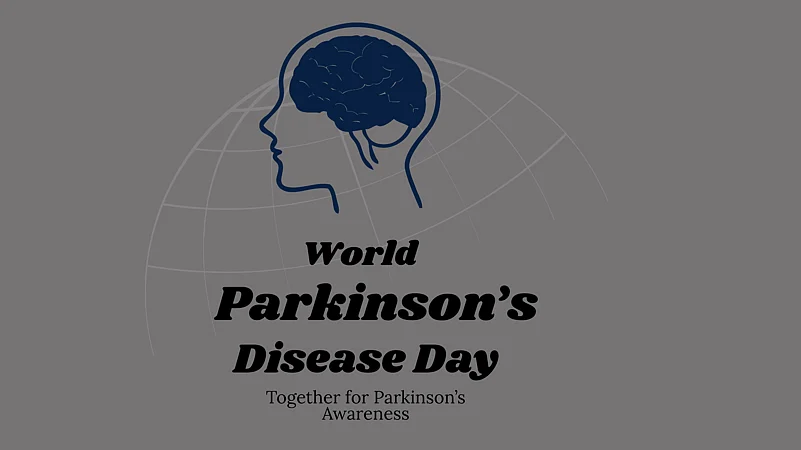Parkinson’s disease is a neurological disorder affecting movement, primarily caused by damage or death of neurons in the part of the brain which produces dopamine. As dopamine levels decrease, the movement gradually becomes impaired. These impaired movement leads to symptoms that include; tremors, stiffness, slowness, and balance problems. Other symptoms can be speech, facial expression, handwriting, and posture changes.
The exact cause is unknown, but it likely involves genetic and environmental factors. Medications may help manage symptoms. The disease usually develops after age 60, but early diagnosis and treatment can improve long-term outcomes. There are also other options, such as physical therapy, occupational therapy, and deep brain stimulation, among others.
Dr. Shabnam Mir, Consultant Physician and Head of Clinical Services at– Antara Senior Care, says: “Parkinson’s is a progressive neurological disorder that disproportionately affects older adults. With early symptoms often mistaken for natural aging, awareness and timely diagnosis are critical in improving quality of life for seniors.”
Recognising the Early Signs
Early signs of Parkinson’s are often subtle, and therefore, mostly dismissed. These include tremors, muscle stiffness, slowness in movement, changes in posture, and a softer voice. Non-motor symptoms like sleep disturbances, constipation, depression, and loss of smell can also signal early onset.
Says Dr. Mir “Early warning signs of Parkinson’s disease in seniors can include subtle changes that are more often than not mistaken for normal aging, which come in the way of early detection. If multiple symptoms persist or worsen, it’s critical that patients consult a doctor for further evaluation, diagnosis and treatment.”
Progression in Older Adults
Parkinson’s in seniors often progresses faster than in younger individuals.
“Older adults go through greater motor impairments, such as rigidity, bradykinesia, and gait and posture issues,” says Dr. Mir. She points out that age-related brain changes, sensory deficits, and comorbidities like cerebrovascular disease contribute to this accelerated decline.
“The treatment may be less aggressive due to altered pharmacokinetics and the presence of comorbidities, further impacting disease evolution,” she adds.
Distinguishing Disease from Aging
It’s crucial to differentiate Parkinson’s from normal age-related changes. While aging may bring mild forgetfulness or slowed movement, Dr. Mir adds that “the movement problems experienced by people with Parkinson's disease are more pronounced and therefore concerning.”
Parkinson’s-related cognitive decline also affects multitasking and decision-making more severely than typical aging.
Diagnosis and What to Expect
There is no definitive lab test for Parkinson’s. Diagnosis is clinical, based on medical history and neurological examination.
Tools like MRI or dopamine transporter (DaT) scans can support the diagnosis, and doctors may prescribe a trial of PD medications to observe symptom response.
Says Dr. Mir, “Regular follow-up appointments are crucial to monitor symptoms over time and adjust treatment as needed.”
Tailored Treatments for Seniors
Treatment for Parkinson’s focuses on symptom management.
“Medications such as dopamine agonists, levodopa, and MAO-B inhibitors are commonly prescribed,” says Dr. Mir.
Advanced therapies like deep brain stimulation are available, and physiotherapy is strongly recommended.
She also highlighted a breakthrough: “As recently as in February 2025, innovative treatments like Onapgo, a wearable infusion pump for continuous dopamine agonist delivery, have been approved to reduce off-episodes and improve symptom control.”
When it comes to medication choices, she adds, “Levodopa remains the primary treatment for seniors because of its efficacy and the fact that the risk of complications like dyskinesias are much lower compared to younger patients.”
Maintaining Independence and Quality of Life
Daily life with Parkinson’s can be managed effectively with the right strategies.
A balanced diet, medication management, and home safety modifications can significantly help seniors preserve independence. Social engagement and mental stimulation through hobbies or support groups also play a vital role in emotional well-being. “Regular physical activity is crucial for maintaining mobility and balance. Assistive devices like canes and walkers with visual or auditory cues can enhance mobility and reduce freezing episodes,” says Dr. Mir.
The Mental Health Challenge
Parkinson affects the brain and therefore mental health is one of the first casualty of Parkinson’s
Says Dr. Mir: “Depression and anxiety are common non-motor symptoms, affecting nearly half of those diagnosed.”
Cognitive impairments like dementia may also emerge, compounding emotional distress.
Building Support Systems
Support for seniors and their caregivers is critical. She recommends a proactive approach, including and the community.
“Seniors are encouraged to seek professional support, engage in regular physical activity, and utilise resources like support groups or counselling services. Families must also play an active role. Encouraging independence while offering assistance with daily tasks can help maintain dignity and quality of life. Multiagency collaborations between healthcare providers and community organisations are increasingly promoted to ensure personalised care and better access to resources,” she says.
Planning for the Future
Long-term care is crucial for seniors with Parkinson’s disease. As such families may consider exploring financial strategies and options of assisted living to ensure proper dignity and support of patients.
There is no definitive cure for Parkinson’s, but lifestyle choices may reduce the risk. Regular physical activity and a balanced diet can help support brain health. One should also avoid environmental toxins, and manage stress. “Awareness helps seniors recognise early symptoms that may be mistaken for normal aging, possibly facilitating early diagnosis and treatment,” says Dr Mir
Parkinson’s is a complex disease, but with early diagnosis, targeted care, and community support, seniors can continue to live active, meaningful lives. As Dr Mir succinctly puts it, “The goal is not just to treat the disease, but to empower seniors to live well with it.”




















